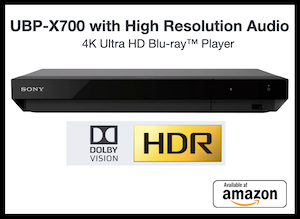Grayson Dere
Moderator
More
- Preamp, Processor or Receiver
- Integra DTR 7.8
- Main Amp
- Class D Audio: SDS-470CS
- Additional Amp
- Shellbrook Audio Hybrid Head headphone amp
- Universal / Blu-ray / CD Player
- Sony UBP-X700
- Streaming Subscriptions
- Origin Live Aurora MKIII turntable
- Front Speakers
- Vandersteen Model 2
- Subwoofers
- SVS PB-2000
- Other Speakers
- Grado SR 325is headphones
- Screen
- Elite Screen 120"
- Video Display Device
- JVC DLA-X75
I recently came across a VERY interesting article from the website: www.audiogeorge.com
There is an article called, 'How to play most, if not all, digital media in absolute polarity.'
http://www.audiogeorge.com/how-to-play-most-if-not-all-digital-media-in-absolute-polarity/
In the article the author claims that:
"All tracks on approximately 92% of compact discs (CDs) play in inverted polarity on approximately 92% of compact disc players (CD players or servers that they’ve been ripped to) which means polarity mistakes aren’t random."
Further down the article it reads:
"Playing music in inverted polarity rather than in absolute polarity (aka absolute phase) makes the sound brighter, harsher, more congested, less 3-dimentional sounding, and in general less musically and emotionally involving."
Quickly after reading this portion of the article a lightbulb went off in my head...is THIS the reason why so many people prefer vinyl playback compared to digital media!!?? Have I actually found the scientific explanation to this decades long argument in vinyl vs. digital sound quality?
I am very curious as to what others have to comment on regarding this polarity phenomenon in recorded music. I spoke at length with a friend of mine that is a recording engineer and he claims with all the technology we have today at our disposal for recording purposes polarity issues should never come up...but obviously it still does.
As an example: Miles Davis' Kind of Blue supposedly plays in reversed polarity on 92% of CD players.
(at the bottom of mentioned article there is a list of recordings with polarity notes beside them)
Just to further open the can of worms, what about our blu-ray discs/players? are we not listening to our movies as they were originally intended?
As always, thanks for any and all comments!
There is an article called, 'How to play most, if not all, digital media in absolute polarity.'
http://www.audiogeorge.com/how-to-play-most-if-not-all-digital-media-in-absolute-polarity/
In the article the author claims that:
"All tracks on approximately 92% of compact discs (CDs) play in inverted polarity on approximately 92% of compact disc players (CD players or servers that they’ve been ripped to) which means polarity mistakes aren’t random."
Further down the article it reads:
"Playing music in inverted polarity rather than in absolute polarity (aka absolute phase) makes the sound brighter, harsher, more congested, less 3-dimentional sounding, and in general less musically and emotionally involving."
Quickly after reading this portion of the article a lightbulb went off in my head...is THIS the reason why so many people prefer vinyl playback compared to digital media!!?? Have I actually found the scientific explanation to this decades long argument in vinyl vs. digital sound quality?
I am very curious as to what others have to comment on regarding this polarity phenomenon in recorded music. I spoke at length with a friend of mine that is a recording engineer and he claims with all the technology we have today at our disposal for recording purposes polarity issues should never come up...but obviously it still does.
As an example: Miles Davis' Kind of Blue supposedly plays in reversed polarity on 92% of CD players.
(at the bottom of mentioned article there is a list of recordings with polarity notes beside them)
Just to further open the can of worms, what about our blu-ray discs/players? are we not listening to our movies as they were originally intended?
As always, thanks for any and all comments!

















